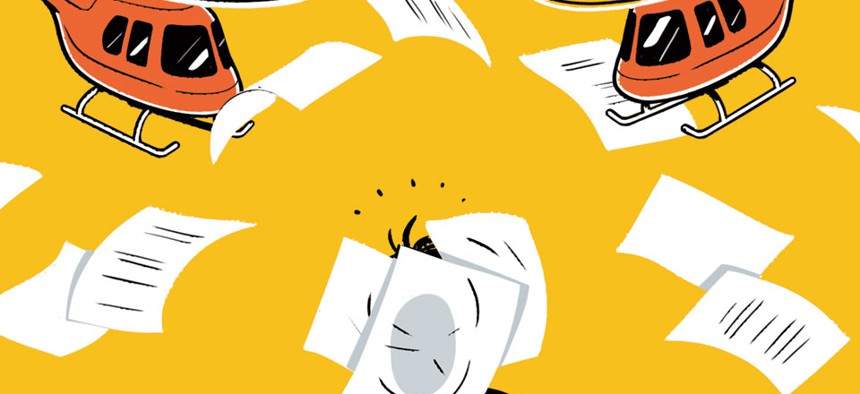
Chris Gash
The Helicopter Manager
Offering too much help can stunt an employee’s’ growth.
Just about everyone knows helicopter parents, always hovering overhead to make sure their children are thriving. In a survey of 725 employers hiring recent college graduates, more than a quarter had been contacted by applicants’ parents or received applicants’ resumes from parents; some even had parents show up with their children at interviews, negotiate the terms of job offers, and ask for a raise or promotion.
In the workplace, many people become helicopter managers, hanging over their employees in a well-intentioned but ill-fated attempt to provide support. These are givers gone awry—so desperate to help others that they develop a white knight complex and end up causing harm instead.
Studies by psychologist Sandy Lim of the National University of Singapore suggest that helicopter managers disrupt employees’ learning and damage their confidence, preventing them from becoming independent and competent. In focusing on the short-term benefits of helping, helicopter managers overlook the long-term costs.
Research at the Center for Creative Leadership shows that challenges—including having to work on unfamiliar tasks, lead change during uncertainty and exercise influence without authority—are important predictors of learning on the job. Three decades of evidence reveals that people perform better when they are given difficult goals. Challenges motivate them to work harder and smarter, develop knowledge and skills, and test different strategies.
But what’s the optimal level of difficulty?
In a study led by the late University of Michigan psychologist John Atkinson, people were given the opportunity to take practice shots from three different distances in a game of shuffleboard. Here were the odds of success for each:
- Very easy (1 to 5 feet away): 55 percent
- Intermediate (6 to 10 feet): 30 percent
- Very difficult (11 to 15 feet): 2 percent
As you might expect, participants classified as high achievers preferred to challenge themselves. More than half of the high achievers chose the intermediate level of difficulty, and more than one-third chose the very difficult distances. Just 6 percent chose the very easy distances.
But surprisingly, the low achievers liked challenges too. Only 19 percent of them chose the very easy distances, 26 percent chose the intermediate difficulty, and 54 percent chose the very difficult distances. In other studies, Atkinson found that people often prefer a 50 percent chance of success over a 75 percent chance. In Ambition (Basic Books, 1992), social psychologist Gilbert Brim writes that people strive for “just manageable difficulties” that test and stretch their skills, but don’t set them up for certain failure.
To prevent the helping hand from striking again, managers need to keep their helicopter tendencies in check. Instead of rushing to the rescue in ways that fail to benefit employees and providing help that stifles their growth and development, leaders would be wise to present manageable difficulties. Anne Frank once said, one “can only give good advice or put them on the right paths, but the final forming of a person’s character lies in their own hands.”
Adam Grant is a professor at the University of Pennsylvania’s Wharton School and author of Give and Take: A Revolutionary Approach to Success (Viking Adult, 2013).
NEXT STORY: The Telework Gap







